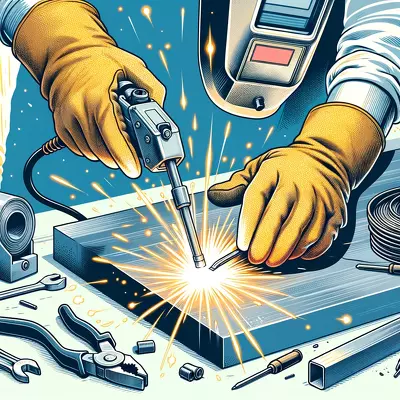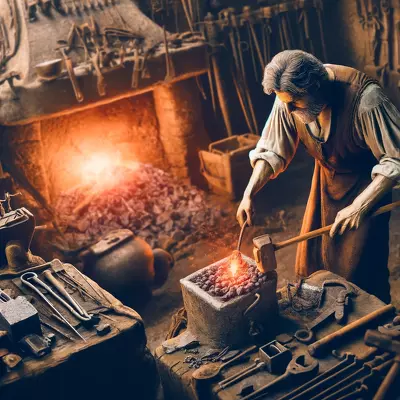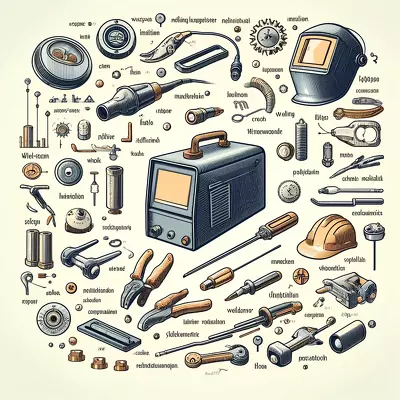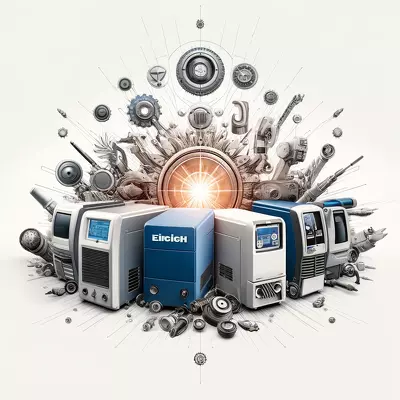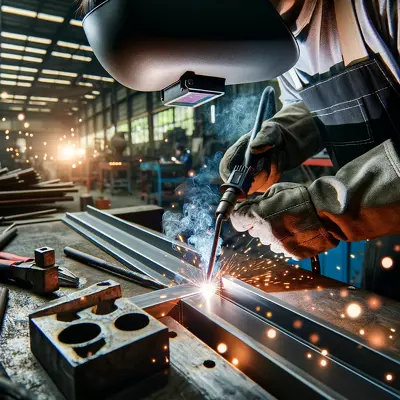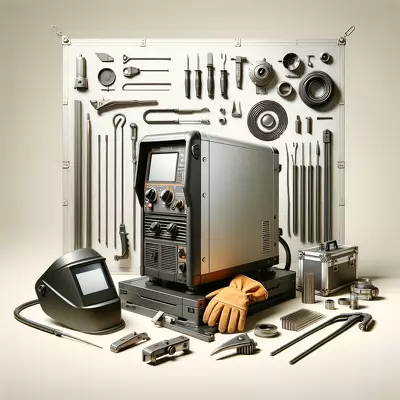The Essential Guide to Flux Core Welding: What It Is and Why It Matters
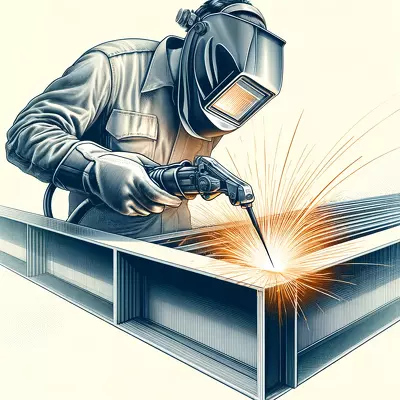
Flux core welding is a versatile welding process primarily used in construction and repair work. It allows for fast joining of metals outdoors, even in windy conditions, which might disrupt other welding methods. This technique is particularly valuable for its portability and ability to create strong bonds without needing external shielding gases, making it ideal for heavy equipment repairs and building robust structures like bridges and ships.
I. Introduction to Flux Core Welding
A. Definition and Basic Principles
Flux core welding, also known as FCAW (Flux Cored Arc Welding), is a semi-automatic or automatic arc welding process. It uses a tubular wire filled with flux to facilitate the welding process. This method is popular for its ability to produce high-quality welds efficiently and without requiring a shielding gas, making it suitable for various environmental conditions.
B. What Are the Different Variants of Flux Core Welding?
There are primarily two types of flux core welding: self-shielded and gas-shielded. Self-shielded FCAW does not require an external gas supply, as the flux inside the wire core releases gases needed to protect the weld pool from contamination. In contrast, gas-shielded FCAW uses an external gas supply to safeguard the weld, providing a cleaner weld bead and allowing for more versatility in welding different materials.
C. Key Components and Equipment
The essential equipment for flux core welding includes a welding machine, a wire feeder, and a spool of flux-cored wire. Personal protective gear such as gloves, a helmet with a visor, and safety glasses are also crucial to ensure the welder’s safety during operations. Optional items can include a portable generator for fieldwork and a gas supply for gas-shielded flux core welding.
II. Applications of Flux Core Welding
A. Industrial Uses
Flux core welding is extensively used in heavy manufacturing industries, including shipbuilding, automotive assembly, and machinery production. Its capability to penetrate thick sections of steel makes it ideal for constructing large structures like ships and tanks.
B. Construction Projects
In the construction sector, flux core welding is used to build bridges, high-rise buildings, and other steel frameworks. It adapts well to outdoor conditions, making it highly effective for on-site construction welding tasks.
C. Repair and Maintenance Work
This welding technique is also a favorite in repair and maintenance fields, particularly for fixing heavy equipment, railcars, and industrial machinery. Its efficiency in all positions (even overhead or vertical welding) is highly valued when working in confined or difficult-to-reach spaces.
III. Advantages of Flux Core Welding
A. Efficiency and Speed
Flux core welding is faster than traditional welding methods due to its continuous wire feed and high deposition rates. This significantly speeds up project timelines.
B. Flexibility in Various Environments
Its resistance to environmental factors like wind allows for welding operations outdoors without the need for tents or shields, which are often necessary with other welding types.
C. Cost-Effectiveness
The efficiency and speed of flux core welding reduce labor costs and time on the job, translating to overall cost savings on projects. Additionally, the lack of required gas in self-shielded FCAW can further decrease operational costs.
IV. Comparison with Other Main Welding Processes: MIG, TIG, and Stick Welding
A. MIG Welding (Metal Inert Gas)
MIG welding, also known as Gas Metal Arc Welding (GMAW), is another popular form of welding that uses a continuous wire feed similar to flux core welding but requires an external shielding gas to protect the weld area from atmospheric contamination. This method is favored for its versatility, high production rates, and the ability to weld thin to medium-thick metals. It is especially prevalent in automotive repair and fabrication due to its clean welds and ease of use.
B. TIG Welding (Tungsten Inert Gas)
TIG welding, or Gas Tungsten Arc Welding (GTAW), offers the highest quality welds among all the welding processes, making it ideal for precision tasks in industries such as aerospace and artistic sculpture. Unlike MIG and flux core welding, TIG requires the use of a non-consumable tungsten electrode to produce the weld. This process is known for its complexity and slower welding speed. Still, it provides superior control over the weld, allowing for strong, high-quality welds on a variety of metals, including non-ferrous metals like aluminum and magnesium.
C. Stick Welding (Shielded Metal Arc Welding)
Stick welding, or SMAW uses a consumable electrode coated in a chemical flux to create the weld. This process is highly effective for outdoor applications, similar to flux core welding, due to its simplicity and versatility. It is commonly used in the construction of heavy steel structures and in industrial fabrication where welding conditions could be better. Stick welding is less sensitive to wind and rust or dirt on materials, making it reliable when precision and cleanliness are less critical. However, it generally produces more spatter and requires more skill to master than MIG or flux core welding.
Each of these welding processes has its own set of advantages, limitations, and typical applications, making them suitable for different types of tasks within various industries. Flux core welding stands out for its portability, strong penetration, and adaptability to adverse environmental conditions, making it highly valuable for jobs that require efficiency and flexibility.
V. FAQs
Q: What materials can be joined using flux core welding?
A: Flux core welding is primarily used on ferrous materials such as carbon steel and stainless steel.
Q: Is flux core welding suitable for beginner welders?
A: Yes, it is considered more forgiving than other methods and is often recommended for beginners due to its versatility and straightforward setup.
Q: How does weather affect flux core welding?
A: Unlike other welding techniques, flux core welding can be performed in windy or humid conditions without significant impact on the weld quality.
Q: What safety precautions should be taken when using flux core welding?
A: Essential safety gear includes a welding helmet, gloves, and protective clothing. Adequate ventilation is also crucial to avoid inhaling fumes.
Q: Can flux core welding be automated?
A: Yes, flux core welding is often used in automated applications, enhancing productivity and consistency in industries like automotive manufacturing.
Q: What are the limitations of flux core welding?
A: The main drawbacks include the potential for producing smoke and fumes and the higher equipment costs compared to some other welding types.
Q: How does the thickness of the material affect flux core welding?
A: Flux core welding is excellent for thicker materials due to its deep penetration, but adjustments in technique and settings may be necessary for thinner materials to avoid burn-through.
VI. Conclusion
A. Summary of Flux Core Welding Benefits
Flux core welding offers a robust solution for fast-paced, high-volume welding needs in industrial and construction settings. Its adaptability in different environments and cost-effectiveness make it a preferred choice among professionals.
B. Potential Developments in Flux Core Welding Technology
Future advancements in flux core welding technology are likely to enhance its efficiency and environmental friendliness. Innovations could include new wire formulations and improved automated welding systems to increase precision and reduce waste.
VII. Suggested Readings
Before exploring flux core welding further, it’s helpful to understand its context in the broader field of welding and its specific applications. Here are a few recommended readings that provide a deeper insight into flux core welding and general welding techniques.
- “Welding Essentials” – Offers a detailed overview of various welding methods, including flux core welding, and practical advice for effective welding.
- “Modern Welding Technology”—This book provides a comprehensive look at the latest technologies and practices in welding.
- “The Welder’s Handbook” – A guide for beginners and experienced welders alike, focusing on techniques, safety, and equipment.
- “Metals and How to Weld Them” – Teaches the properties of different metals and the best practices for welding them using various techniques, including flux core welding.
After considering these readings, you’ll have a well-rounded understanding of how flux core welding fits into the wider world of metal fabrication and how it can be effectively applied to your projects.

